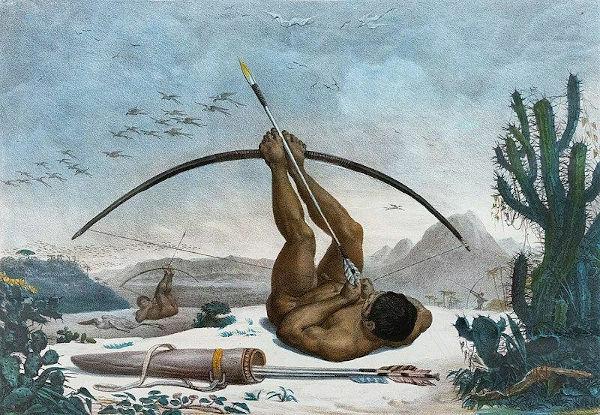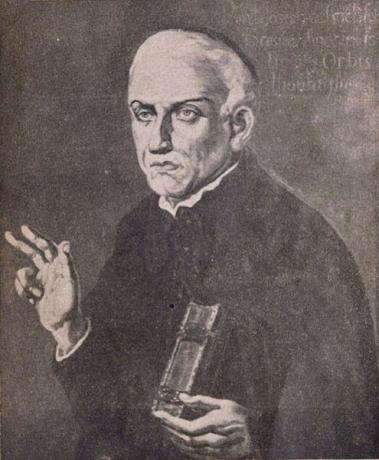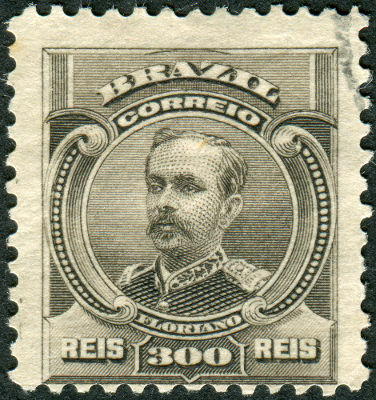THE indigenous slavery it was the first attempt by the Portuguese Crown to exploit the workforce in Brazil. You Portuguese found numerous difficulties in capturing indigenous for this purpose. In addition to these knowing the territory very well, the priests Jesuits they became obstacles to slavery, because they defended the Indians to be catechized.
The Crown only authorized indigenous slavery through just war. With the coming of African blacks to slave labor, and bearing in mind the profitability of the slave trade, indigenous slavery was being left aside.
Read too: Slavery in Brazil: forms of resistance

Historical Context of Indigenous Slavery
When the Portuguese landed in Brazil in 1500, the first contact with the natives to learn more about the region and its riches.
The colony's first economic cycle was the brazilwood. The Indians removed the trees from the forests near the coast and placed them in Portuguese caravels in exchange of mirrors and trinkets that had no commercial value for the Portuguese, but attracted the attention of the natives. This exchange was called
barter.While Portugal profited from the Indian spice trade, the new lands in America served as warehouse, to stop the sailings coming from Portugal to then continue the journey towards the Indies. Meanwhile, the brazilwood trade was maintained.
The crisis in the spice trade and the threat of invasion by English and French pirates made Portugal definitely invest in the possession and exploitation of Brazil. Unlike the Spaniards, who found gold in the first years of colonization in America, the Portuguese were not so lucky. The brazilwood trade generated some profit, but not enough for the Portuguese crown. The colonizers tried to get closer to the Indians, so that they would become their allies and, soon after, enslaved. The Indians collaborated with the Portuguese in expelling foreigners who tried to invade Brazil.
In the same period that the Portuguese Crown decided to invest in the exploration of Brazil, the Company of Jesus he also participated in this endeavor and sent several priests to catechize the inhabitants of distant regions of Europe. In the 16th century, the Church suffered the setbacks of Protestant Reformation, and the creation of the Society of Jesus was one of the responses to the Protestant advance in America.
The Jesuit priests played an important role in the Christianization of the settlers and the catechizing of the Indians. O Father José de Anchieta he learned the Tupi-Guarani language and was the first to make a dictionary about it. He used poetry and theatrical presentations to evangelize the Indians.
Do not stop now... There's more after the advertising ;)
Causes of Indigenous Slavery
The causes of indigenous slavery are mainly linked to the purpose of the Portuguese to colonize Brazil. Unlike what happened in North America, the Portuguese colonizers did not leave their kingdoms to live here. They came only to explore the riches of Brazil. The only available labor was indigenous, however, slave and large-scale labor was not common for the Indians.
Settlers used threats, physical force and the spread of disease to force the Indians to work for the Crown. Several tribes were decimated because of the conflict with the Portuguese when they refused slave labor. Many Indians fled to the interior of Brazil, avoiding being enslaved. The failure of indigenous slavery made the Portuguese opt for black slavery from Africa.
Slavery among the Indigenous
Slavery among the Indians happened soon after one tribe defeated another in combat. The defeated were turned into slave labor, but the labor required did not compare with what the Portuguese expected the Indians to do.
Slavery among the Indians was work in the tribe. Also, there were tribes cannibals who ate the flesh of their opponents, because they believed that, in this way, they would have the same qualities as those who died in combat. For example, if a captured enemy was a good runner, his legs were eaten so that their speed would be added to whoever ate them.
See too: Indigenous culture - striking aspects and their peculiarities
Church and Indigenous Slavery
the first years of colonization effective in Brazil, from 1530 onwards, exhibited conflicts between the Church and Portuguese settlers. The settlers wanted to enslave the Indians to work on the sugarcane plantations, while the religious approached them to catechize them. The Indians were seen as inferior beings, who needed conversion to Catholicism so that their souls would not be condemned. Therefore, the religious practices carried out by the tribes before the arrival of the Portuguese were abolished by the Jesuit priests.
Realizing that the settlers would not cease chasing them until they were able to capture them for work on the sugar plantations, the Jesuit priests fled with the Indians to the interior of Brazil, mainly to the southern and northern lands of the colony. Thus arose the Jesuit missions, which protected the Indians from the persecution of the Portuguese and in which they were Catholic doctrine and the preparation of the land for planting food to be consumed there.
This Jesuit advance was the first movement of interiorization in Brazil. The Jesuits reached the north of the colony, mainly the region close to the Amazon rainforest. These religious expeditions to the north discovered the backcountry drugs, products from the forest.

Crown and Indigenous Slavery
To avoid conflict between the settlers and the Jesuits, the Portuguese crown determined the just war — the Portuguese could only enslave Indians who had entered into conflict with the colonists, a gratuitous confrontation, without provocation by the Portuguese.
Abolition of Indigenous Slavery
THE Portuguese crown had more harm than good from indigenous slavery. The flight to more distant regions, the unavailability for the intensive work required by the Crown and the presence Jesuit defense of the Indians made the Portuguese rethink forms of labor for the farming of sugar cane. African slavery proved profitable and more advantageous than indigenous slavery.
Indigenous slavery X African slavery
African blacks came to work as slaves in Brazil to meet the Crown's desire to quickly start intensive sugar production. Like slave labor coming from Africa being financially advantageous and attractive to the planters of the Northeast, the slave trade intensified to this region, and thus Indigenous slavery was replaced by black labor.
Summary on Indigenous Slavery
- The indigenous work in the colony was the first attempt to enslave the Indians so that they would work intensively in the sugarcane plantations in the Northeast.
- Conflicts between settlers and Jesuits over Indian possession.
- Just war: the Crown only admitted indigenous labor if there was conflict between the settlers and the indigenous tribes.
- The slave trade proved to be more profitable and attractive to planters.
Also access: How was the life of ex-slaves after the Golden Law?
solved exercises
Question 1 - We can say that the just war was:
A) justification for the enslavement of indigenous labor.
B) religious dispute between Catholics and Muslims.
C) conflict between Portugal and Spain for the total possession of America.
D) war between Portuguese and French pirates in Rio de Janeiro.
Resolution
Alternative A. If an indigenous tribe attacked any settler in Brazil, that settler could enslave the Indians who attacked him: it was just war.
Question 2 - How did the Jesuits act with the Indians?
A) The Jesuit priests avoided contact with the Indians, as they did not want to be tempted to marry.
B) The Jesuits catechized the Indians to gain more adherents to the Catholic Church.
C) In the just war, the Jesuits encouraged the Indians to wage war against the Portuguese.
D) The Jesuits failed in their goals of catechizing the Indians.
Resolution
Alternative B. Shortly after the Protestant Reformation, the Catholic Church intended to increase the number of believers in the newly discovered lands of America. The Jesuit priests were responsible for establishing the Christian faith among the settlers and catechizing the Indians.
By Carlos César Higa
History teacher

